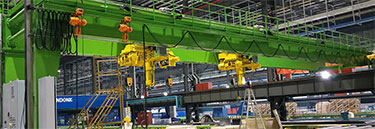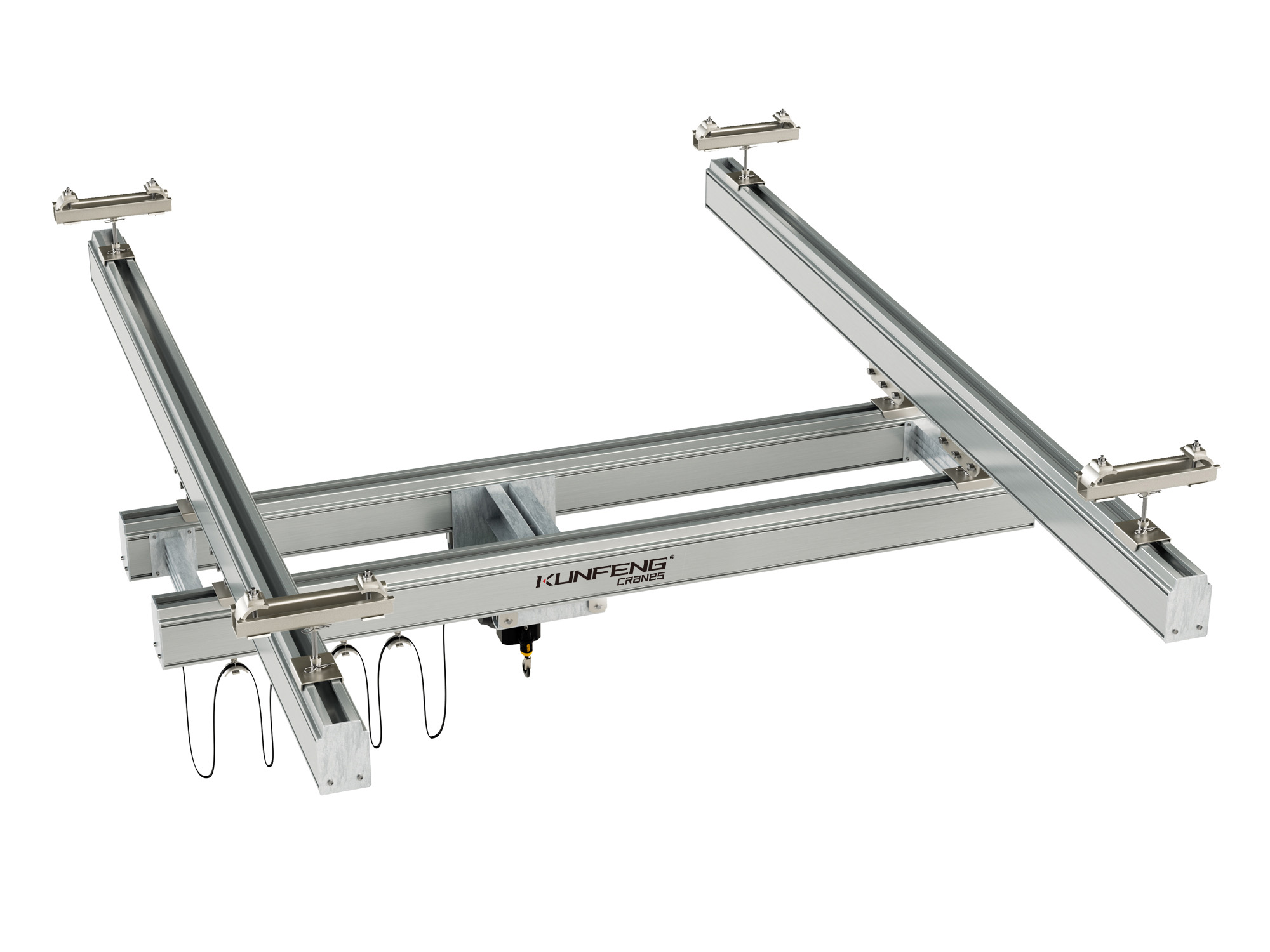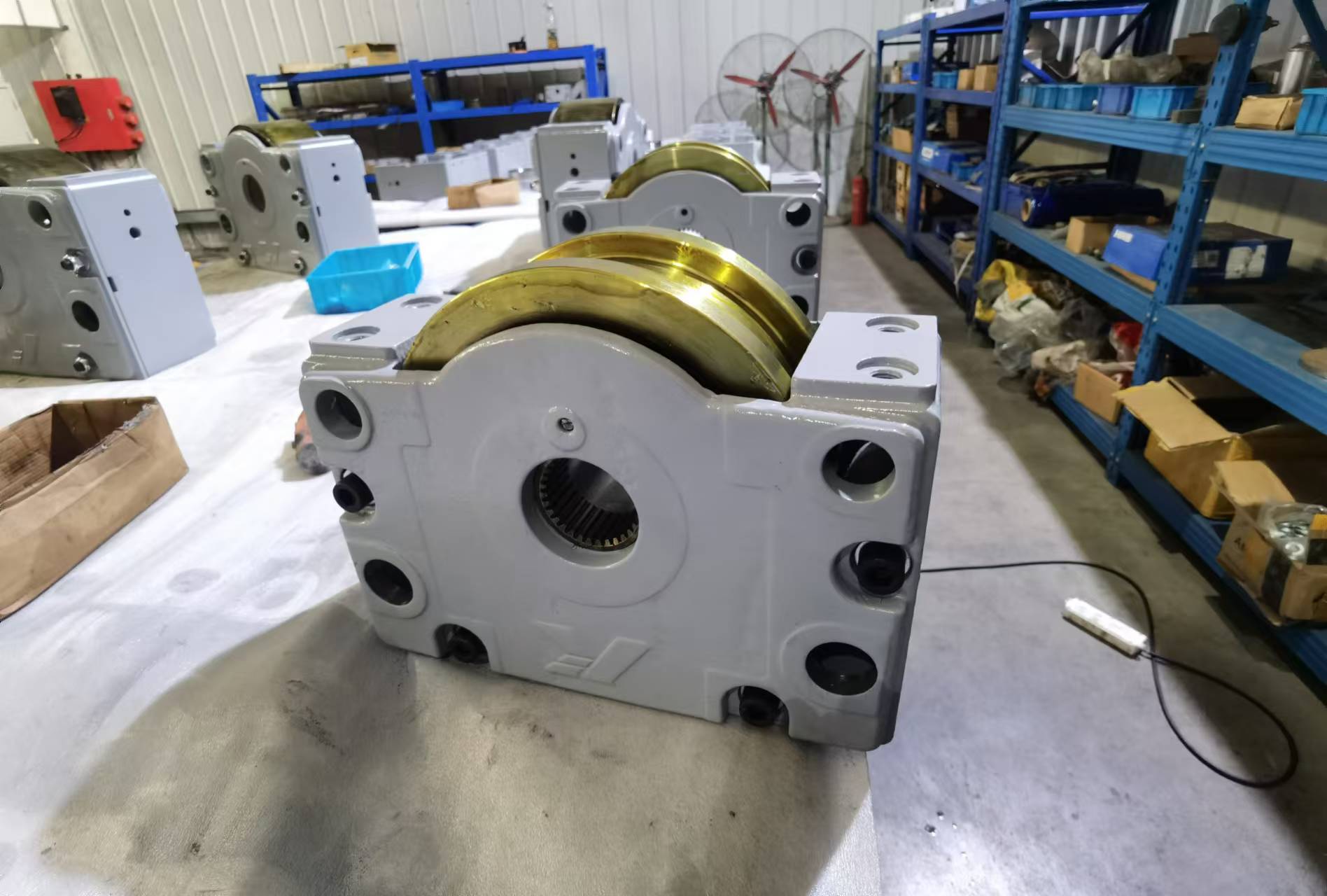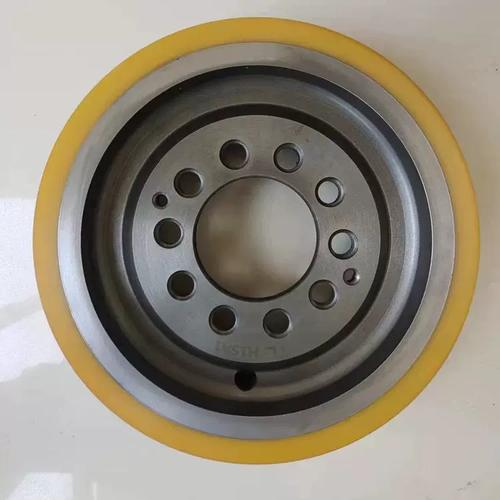
| Load Turning Device for Marine Engine Rotation
The load turning device is a device that can be used to turn both filled and empty moulding boxes, large engine blocks, rectangular-sheet-metal-part, etc. Such as during refractory dressing, core insertion, and assembling. This load turning device ensures both speed and safety in operations. The objects are fixed with chains to external trunnions and can rotate quickly and safely into any position. The load turning device is available in various models to make turning of moulding boxes and workpieces more comfortable and faster.
Advantages of Load Turning Device
1. Adjustment of the driving device
Depending on the width of the engine blocks, the distance of the turning device can be adjusted manually or electrically.
2. Radio remote control
The radio remote control allows for safe and convenient operation of the load turning unit and all crane functions from a distance.
3. The rotated item can stop at any position
No damage to the items and avoid accidents during the rotation
4. It can be used with a crane and suitable for various scenarios.

The powered load turning device is versatile and can be hung from a bridge crane or trolley hoist. It can also be lifted by a forklift truck or incorporated into a gantry crane. This device is custom designed in various sizes ranging from compact and lightweight units with a 1000-lb capacity to larger systems capable of handling 30-ton steel molds.
Different Sling Options of Load Turning Device
Web slings are available in both polyester and nylon with metal disconnect links or endless configuration. Both types are strong, lightweight and flexible.
Metal mesh slings are used in metalworking operations where loads are hot and/or abrasive. Stainless steel slings are also available for corrosive environments. Disconnect pins are used with metal mesh slings.
KUNFENG CRANES load turning device allow 360° rotation of goods for assembly or production.
Using a load turning machine, engine blocks can be transported safely and efficiently between machining operations, while simultaneously rotating the blocks.








